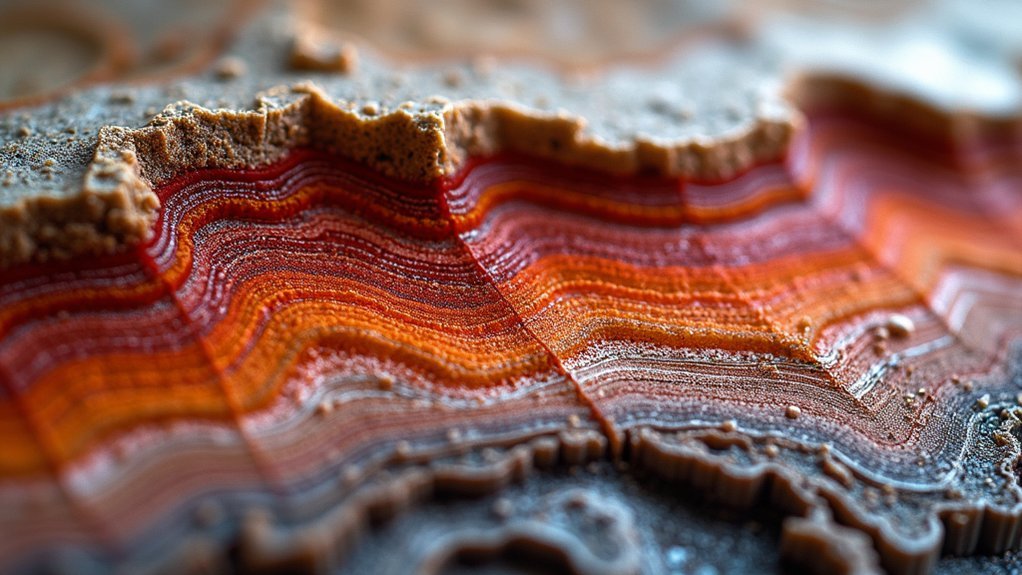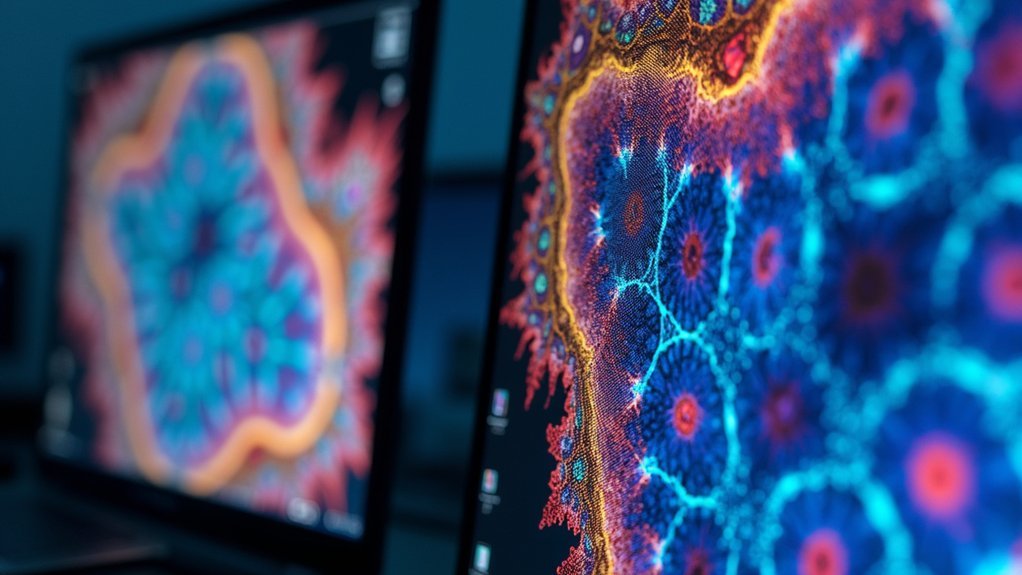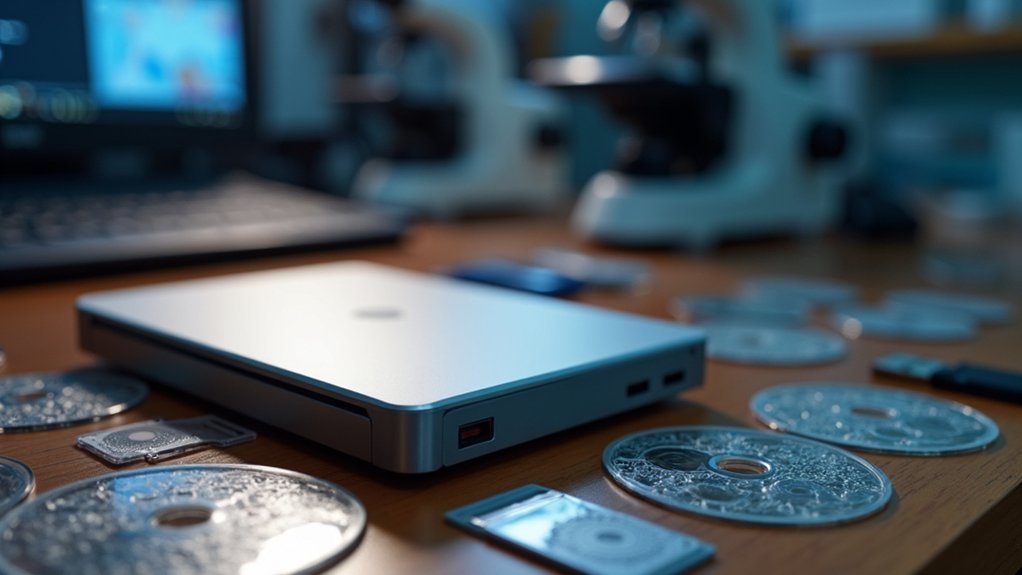TIFF stands as the gold standard for scientific imaging, offering lossless quality and robust metadata. OME-TIFF enhances this with structured data management for microscopy. Choose PNG over JPEG when precision matters, as it preserves exact pixel values without artifacts. For publications, vector formats like PDF and EPS maintain clarity at any scale. For massive datasets, pyramidal formats optimize storage and access. These five formats guarantee your research data remains accurate and accessible for years to come.
TIFF: The Scientific Research Standard

When preserving the integrity of scientific images is vital, TIFF stands as the gold standard format across research disciplines. You’ll find TIFF’s uncompromising ability to store high-quality images without degradation makes it indispensable for accurate analysis and reproducible research.
Unlike lossy alternatives, TIFF supports multiple bit depths (8-bit, 16-bit, 32-bit), capturing subtle variations essential for detailed microscopy work. You can choose lossless compression options that maintain every pixel value while reducing file size.
What truly sets TIFF apart is its robust metadata capabilities, particularly in the OME-TIFF variant. This structured information storage guarantees your experimental parameters, calibration data, and acquisition details travel with the image—a requirement that’s made TIFF the preferred submission format for leading scientific journals.
OME-TIFF: Enhanced Metadata Management
Building on TIFF’s robust foundation, OME-TIFF represents a significant advancement for researchers handling complex biological imaging data. This specialized file format integrates thorough metadata management directly into your image files, solving many challenges in scientific imaging workflows.
Key advantages of OME-TIFF include:
- The embedded OME-XML header stores detailed acquisition parameters and specimen information
- Support for multi-dimensional data across time, space, and channels in a single file
- Enhanced interoperability between different analysis software platforms
- Standardized structure that guarantees long-term accessibility of your valuable research data
When you’re working with complex biological specimens, OME-TIFF’s structured approach to metadata keeps your experimental context permanently linked to your visual data, making it one of the most valuable file formats used in modern research settings.
PNG vs. JPEG: Compression Trade-offs for Visual Data

Although both widely used in scientific publishing, PNG and JPEG formats represent fundamentally different approaches to image compression that directly impact your data integrity.
PNG’s lossless compression preserves every detail without degradation, supporting full transparency and wider color ranges—critical for high-precision scientific figures.
JPEG, with its lossy compression, creates smaller files but sacrifices quality, introducing artifacts around high-contrast edges. You’ll find this especially problematic in detailed scientific visualizations.
When working with scientific image formats, choose PNG for diagrams, graphs, and images requiring absolute clarity.
Opt for JPEG when dealing with photographic data where slight quality reduction is acceptable and file size constraints exist.
Remember that your choice between these compression methods can markedly influence how accurately your visual data communicates your findings.
Vector Formats: PDF and EPS for Publication Quality
Two cornerstone formats dominate scientific publishing where image quality can’t be compromised: PDF and EPS.
When preparing figures for scientific publications, you’ll find these vector graphics formats offer significant advantages over raster alternatives:
- Unlike pixel-based formats, PDF and EPS maintain perfect clarity when scaled or zoomed—essential for detailed scientific figures.
- Vector graphics typically yield smaller file sizes, helping you meet strict submission portal limitations.
- Both formats preserve the precise details of your data visualization without quality degradation.
- PDF and EPS guarantee your work appears professionally in print and digital versions of journals.
Always check your target journal’s guidelines before submission, as some publications—particularly in chemistry—may still require specific raster formats despite the clear benefits of vector options.
Pyramidal Formats: Optimizing Large Microscopy Datasets

When microscopy datasets grow to gigabytes in size or even terabytes, traditional image formats become impractical for efficient storage and visualization. Pyramidal formats solve this problem by structuring large bioimages in tiled resolutions, allowing you to access only the visible pixels you need.
Formats like OME-Zarr and QuPath greatly improve visualization speed by loading just the necessary data chunks instead of entire image files. You’ll notice considerably reduced memory usage and faster performance, particularly when traversing through high-resolution microscopy datasets.
This efficient structure optimizes data access times and resource utilization, making these formats ideal for collaborative biological research projects.
Frequently Asked Questions
What File Format Has the Best Image Quality?
For highest image quality, you’ll want vector formats like PDF or EPS for line art, or lossless formats like TIFF or OME-TIFF for photographic data. They’ll preserve all details during resizing or analysis.
What Is the Best Image Format for Scientific Paper?
For scientific papers, you’ll want to use vector formats like PDF or EPS as they maintain quality when scaled. If your journal specifically requires raster formats, use TIFF with high resolution and proper color profile.
What Is the Most Commonly Used Image File Format in Medical Imaging?
In medical imaging, you’ll find DICOM is the most commonly used format. It’s specifically designed to handle medical images while storing important patient metadata and ensuring lossless compression for diagnostic accuracy.
Which Has Higher Resolution, JPEG or PNG or TIFF?
TIFF has the highest resolution compared to JPEG and PNG. You’ll get superior image quality with TIFF’s support for up to 32 bits per channel, allowing you to capture finer details in your images.
In Summary
When selecting file formats for your scientific imaging, you’ll need to balance data integrity, accessibility, and storage efficiency. Whether you’re preserving raw data in TIFF, enhancing collaboration with OME-TIFF, using PNG for lossless compression, creating publication-ready figures in vector formats, or managing large datasets with pyramidal formats, your choice directly impacts data reproducibility and sharing capabilities. Always consider your specific research needs and downstream applications when making these critical decisions.





Leave a Reply